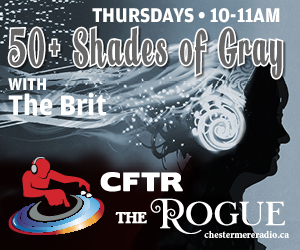With the relaxation of pandemic restrictions last week, I have emerged from the solitude of my windowless wine cellar for a long-awaited evening of noshing and wine snobbery with the usual suspects. For such a momentous occasion, I chose a momentous grape, in the form of the Nebbiolo varietal.
For those not familiar with the grape, Nebbiolo is an ancient varietal, with none other than Pliny the Elder writing of its virtues nearly two millenia ago. The grape has its origins in the Piedmont wine region of northeastern Italy, with some of the best vineyards located in the foothills of the Alps.
The Piedmont wine region of Italy is often compared to the Bordeaux region of France, due to their similar latitudes and reputations for quality. Interestingly, while their summer growing seasons are quite similar, the rain shadow effect of the Alps makes the Piedmont region much drier, with larger diurnal temperature swings affecting the bud break and ripening.
While the Piedmont region grows dozens of grape varietals, Nebbiolo commands the highest prices, and thus receives the prime plots of land, dominating the warmer south-facing slopes in the best vineyards.
The unique terroir of the Piedmont region has proved difficult to replicate, with more than 90% of worldwide plantings in 6000 hectares of the best vineyards Piedmont has to offer. Unlike other more adaptable varietals such as Merlot or Syrah, Nebbiolo very much prefers chalky soils with plenty of calcium carbonate with good drainage and a slightly acidic pH level, which just happen to be in perfect balance along the riverbanks flowing out of the Alps. Due to its fussiness about specific soil contents, the other old-world producers of France and Spain do not trifle with the Nebbiolo grape, but a few brave new-world producers have small plantings that could be called experimental at best.
For those of you thinking of looking for a bottle of Nebbiolo at your next visit to the bottle shop or your favourite Italian restaurant, remember that old-world wines have confusing labels that rarely actually tell you what grape is in the bottle, and Nebbiolo is no exception.
For historical reasons related to wine snobbery, wines made from the Nebbiolo grape will have the growing region on the label, rather than the grape varietal. That means it is up to you, the hapless consumer, to remember which grape varietals are planted in all the thousands of different wine regions, and figure out the grape in the bottle by looking at the growing region on the label.
Fortunately, most restaurants and wine bars will helpfully include the grape varietal on their wine lists, so you will have at least a fighting chance of finding a Nebbiolo wine. If you are searching at your local wine shop, look for labels that display the wine regions of Barolo or Barbaresco, which will contain exclusively Nebbiolo grapes.
Nebbiolo’s reputation comes from its high levels of tannins and acidity, with aromas of tar and roses being the most common characteristics. The palate will reveal notes of leather, anise, and dried fruits, with a lingering finish, and a mouth-puckering dryness.
Up until the 1970s, it was common to age a Nebbiolo for up to 25 years before opening it, as the tart tannins in the wine took that long to soften.
However, modern winemaking techniques led to a great schism in the ranks of the stuffy old winemakers, with the old guard insisting on letting the skins macerate on the juice during fermentation to extract the color and flavour for up to 3 weeks. Long barrel aging was required to soften the bitter tannins from the skins, but the result is a thick and complex wine like no other.
The more modern generation of winemakers went with a maceration time of only a few days instead of a few weeks, and aged the wine in much smaller barrels to reduce the bitter tannins and impart more oak into the wine. This results in a wine that reaches maturity in just a few short years.
A Nebbiolo wine from the much-sought Barolo region fetches around $75 at your local wine shop, which I will only spring for on the fanciest of occasions. For a reasonably priced daily drinker, I prefer the Nebbiolo D’Alba, made from exactly the same grape, but grown in a slightly less prestigious vineyard a short distance away, and priced at only $29 in well-stocked booze merchants across Alberta.








